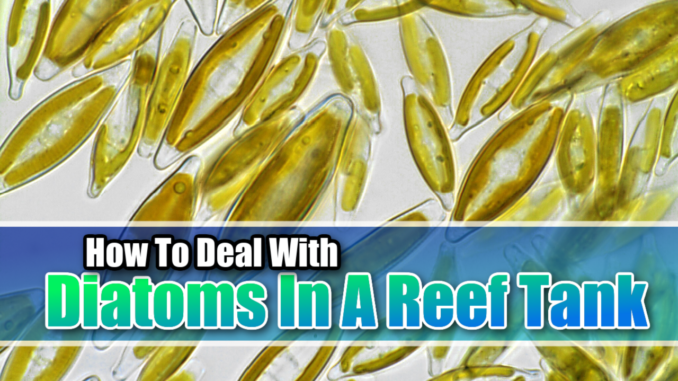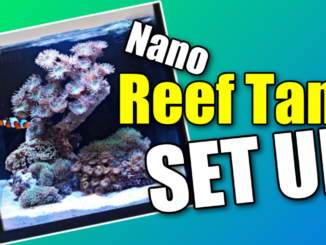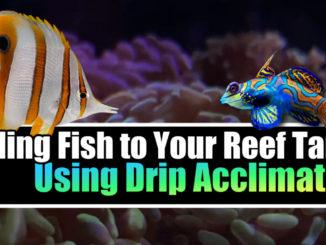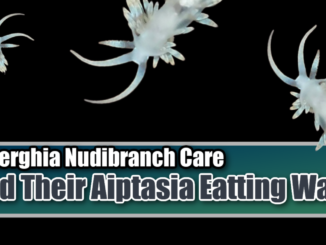
Diatoms are a common problem in reef tanks. These brown algae can quickly take over a tank, making it unsightly and potentially harmful to the health of the inhabitants. Dealing with diatoms can be a frustrating process, but with the right approach, it is possible to get rid of them and prevent them from coming back. In this article, we will explore what diatoms are, what causes them to grow in a reef tank, and how to deal with them effectively.
What are diatoms?
Diatoms are a type of brown algae that can grow in both freshwater and saltwater environments. They are unicellular organisms that have a silica shell, which gives them their distinctive shape. In a reef tank, diatoms can appear as a brown film on the glass, rocks, and sand, and they can quickly spread if left unchecked.
What causes diatoms to grow in a reef tank?
There are several factors that can contribute to the growth of diatoms in a reef tank:
- Excess nutrients: Diatoms thrive in environments that have excess nutrients, such as nitrates and phosphates. If these nutrients are not properly managed, they can fuel the growth of diatoms in the tank.
- New tank syndrome: In a new tank, diatoms can be a common problem. This is because the tank has not yet established a stable biological balance, which can create an environment that is favorable to the growth of diatoms.
- Poor water flow: Diatoms can also grow in areas of the tank that have poor water flow. This can be caused by improper placement of equipment or a lack of maintenance.
How to deal with diatoms in a reef tank
- Address the source of the problem: The first step in dealing with diatoms is to address the underlying source of the problem. This may involve testing the water to determine the levels of nitrates and phosphates, and making adjustments to the filtration system to reduce these levels. It may also involve increasing water flow in areas of the tank where diatoms are growing.
- Introduce diatom eaters: There are several types of invertebrates that can be introduced into a reef tank to help control diatoms. For example, live copepods are known for consuming diatoms on a large scale. More on that below.
- Practice good maintenance: Regular maintenance is essential to keeping a reef tank healthy and preventing the growth of diatoms. This may involve testing the water regularly, performing water changes, and cleaning the tank on a regular basis.
- Be patient: Dealing with diatoms can be a slow process, and it may take several weeks or even months to completely eliminate them from a reef tank. It is important to be patient and consistent in addressing the problem, and to continue practicing good maintenance even after the diatoms are gone.
- UV sterilizers can be an effective tool for controlling diatoms in a reef tank. UV sterilizers work by exposing water to UV-C light, which can kill or disable microorganisms, including diatoms. While UV sterilizers can be effective at controlling diatoms, there are some important considerations to keep in mind when using them.
UV Sterilizers vs. Diatoms
One of the main things to keep in mind when using a UV sterilizer is that it can only be effective if the water passing through it is clear. If the water is cloudy or contains debris, the UV light will be less effective at killing diatoms and other microorganisms. This means that it is important to ensure that the tank is clean and free of debris before using a UV sterilizer.
Another consideration is the flow rate of the water passing through the UV sterilizer. The flow rate should be adjusted to ensure that the water is exposed to enough UV-C light to effectively kill diatoms. If the flow rate is too high, the water may not be exposed to enough UV-C light, while if the flow rate is too low, the UV sterilizer may not be effective at controlling diatoms.
It is also important to note that UV sterilizers should not be used as the sole method of controlling diatoms in a reef tank. While they can be effective at killing diatoms, they do not address the underlying source of the problem, which may be excess nutrients, poor water flow, or other factors. It is important to address the underlying source of the problem in order to effectively control diatoms in a reef tank.
Keep in mind that there are several other steps that can be taken to control diatoms in a reef tank. These include reducing excess nutrients, increasing water flow, adding diatom-eating invertebrates to the tank, and practicing good maintenance. By taking a comprehensive approach to controlling diatoms, it is possible to keep a reef tank healthy and free of diatoms.
Using Live Copepods to Remove Diatoms
Copepods are small crustaceans that are commonly used in reef tanks as part of a clean-up crew. While copepods are primarily used to control detritus and other organic matter, they can also be effective at controlling diatoms.
Diatoms are a type of algae that can grow rapidly in a reef tank when conditions are favorable, such as when there is excess nutrients or low water flow. While diatoms can be unsightly and can affect the health of corals and other invertebrates in the tank, they are also an important food source for copepods.
Copepods are natural predators of diatoms and will consume them as a large part of their diet. By introducing copepods to a tank, aquarists can help to control the growth of diatoms and other algae in a natural and sustainable way.
To introduce copepods to a tank, there are several options available. Live copepods can be purchased from online retailers or local fish stores and added directly to the tank. Another option is to use a copepod culture kit to grow copepods at home and then add them to the tank once the population has grown.
Conclusion
Diatoms can be a frustrating problem in a reef tank, but with the right approach, they can be effectively managed and prevented from coming back. By addressing the underlying source of the problem, cleaning the tank, introducing diatom eaters, practicing good maintenance, and being patient, it is possible to keep a reef tank healthy and free of diatoms.




